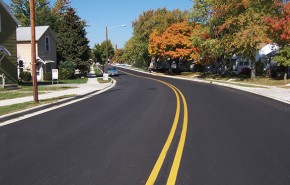If the recession taught us anything, it’s that communities need to leverage their assets and do more with fewer resources. One way to achieve this is through public-private partnerships (P3), which are government service or private business ventures funded and operated through a partnership between a public-sector authority and a private party. P3s allow an entity to finance infrastructure or service needs that would otherwise be unattainable.
In this third article of our Road to Recovery Series, we speak with Tom Kohler, Senior Director, who shares his expertise on the value of P3s and how communities can accomplish more through these collaborative efforts.
What are the benefits of P3s?
Tom: There are three main advantages for municipalities: fewer burdens, efficiency, and cost effectiveness. P3s take the duty of managing a project off the local government, because someone else manages it. P3s are more efficient because the entity managing it has done it many times and has the process down. And they’re more cost effective: the local government gets an up-front dollar amount from the sale or lease of a building/land, the project’s costs are taken off the public sector’s books as an expense, and the private sector can often provide the service at a lower cost than the public sector.
Are there disadvantages to P3s for municipalities?
Tom: With municipal services, two main disadvantages of P3s include less local/governmental control and the entity managing the project is not an elected official, so they’re often less sensitive to public issues.
How can GAI support municipalities in pursuing and funding P3s?
Tom: We assist communities with understanding and implementing P3s. We give upfront advice and explain the total economic package—that it’s not just a real estate deal, but it has an economic impact, an employment effect, and is part of community placemaking.
What are the steps to successfully implementing P3s?
Tom: There are a number of steps to successfully implementing P3s:
- Find out what the community wants. What are their goals, objectives, and vision? Sometimes they’re not sure what they want—they just want something to happen. Perhaps they know they have a great property but don’t quite know how to generate development. Are they looking to create a sense of place, generate jobs, build more housing, or be a catalyst for surrounding development?
- Prepare a market analysis to discover the site’s opportunities. Sometimes there’s a market, but the market’s not ready yet.
- Develop incentives and policies to accelerate the market and support the ultimate development. Examples of incentives include reducing the price of the property/land, giving away the property/land, providing parking assistance, or offering infrastructure support.
- Prepare the request for qualifications/proposal.
- Identify potential respondents (developers) who meet the project requirements and objectives.
- Draft and assist with the preparation of a developer’s agreement.
- Negotiate the final agreement with the developer.
Communities today are faced with less money, leaner staff, and fewer resources to accomplish the goals set within their capital improvement plans. To learn more about P3s and how they can help communities accomplish more—from roadways, bridges, and redevelopment projects to parking lots, health care facilities, and schools—contact Tom Kohler at 407.423.8398.
Tune in for our next article in GAI’s Road to Recovery Series, where we talk with Senior Director Owen Beitsch, PhD, FAICP, CRE about community infrastructure development trends.


